Major project
GrandFit: Keeping Your Golden Retirement Years [Read more]
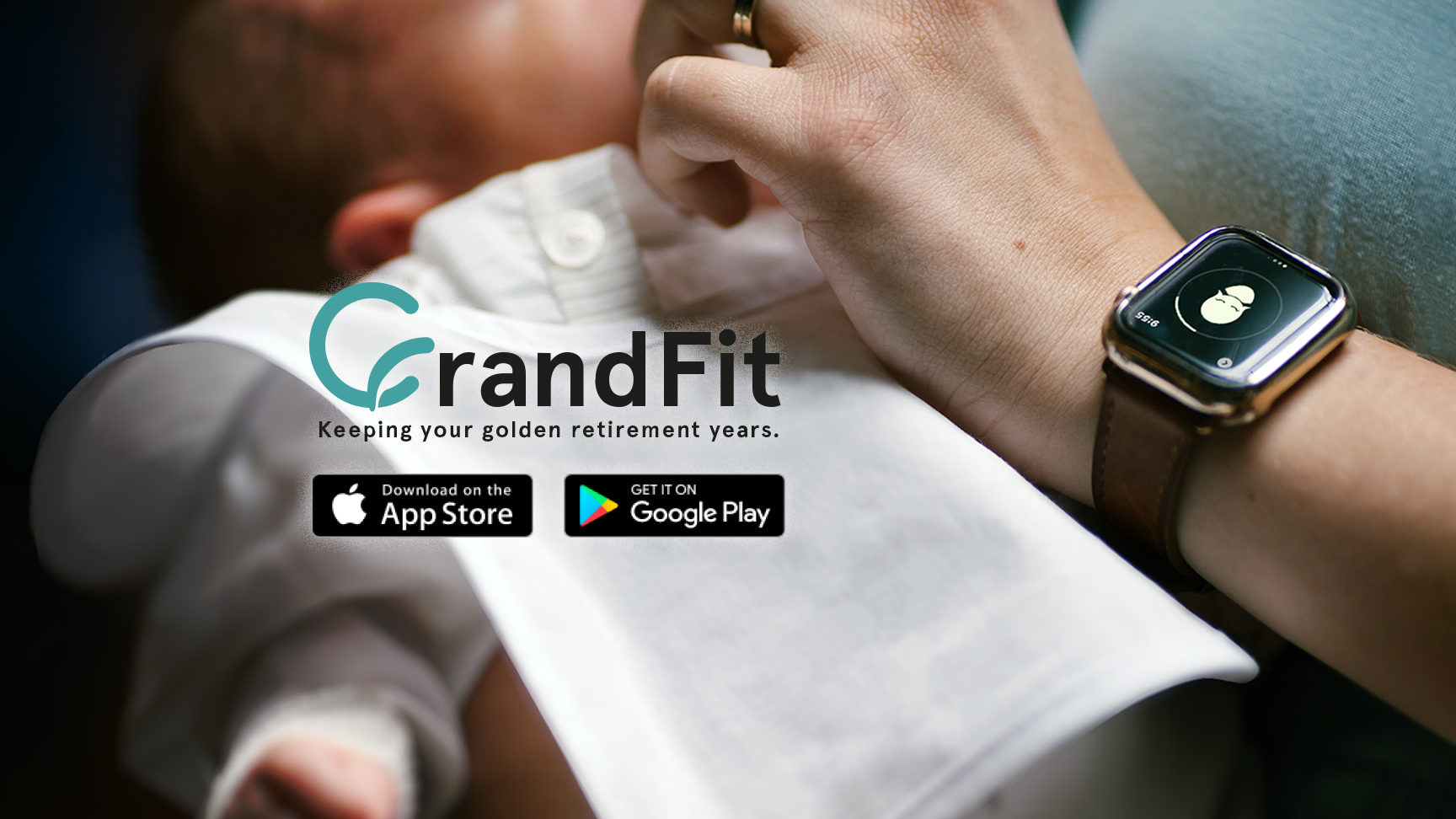
GrandFit: Keeping Your Golden Retirement Years
GrandFit is a state monitoring and relaxation guiding app for recently retired Chinese grandmas whose current lives are occupied with exhausting grandparenting work, who want to be confident and fit enough when finish years of childcare to enjoy the free retired life.
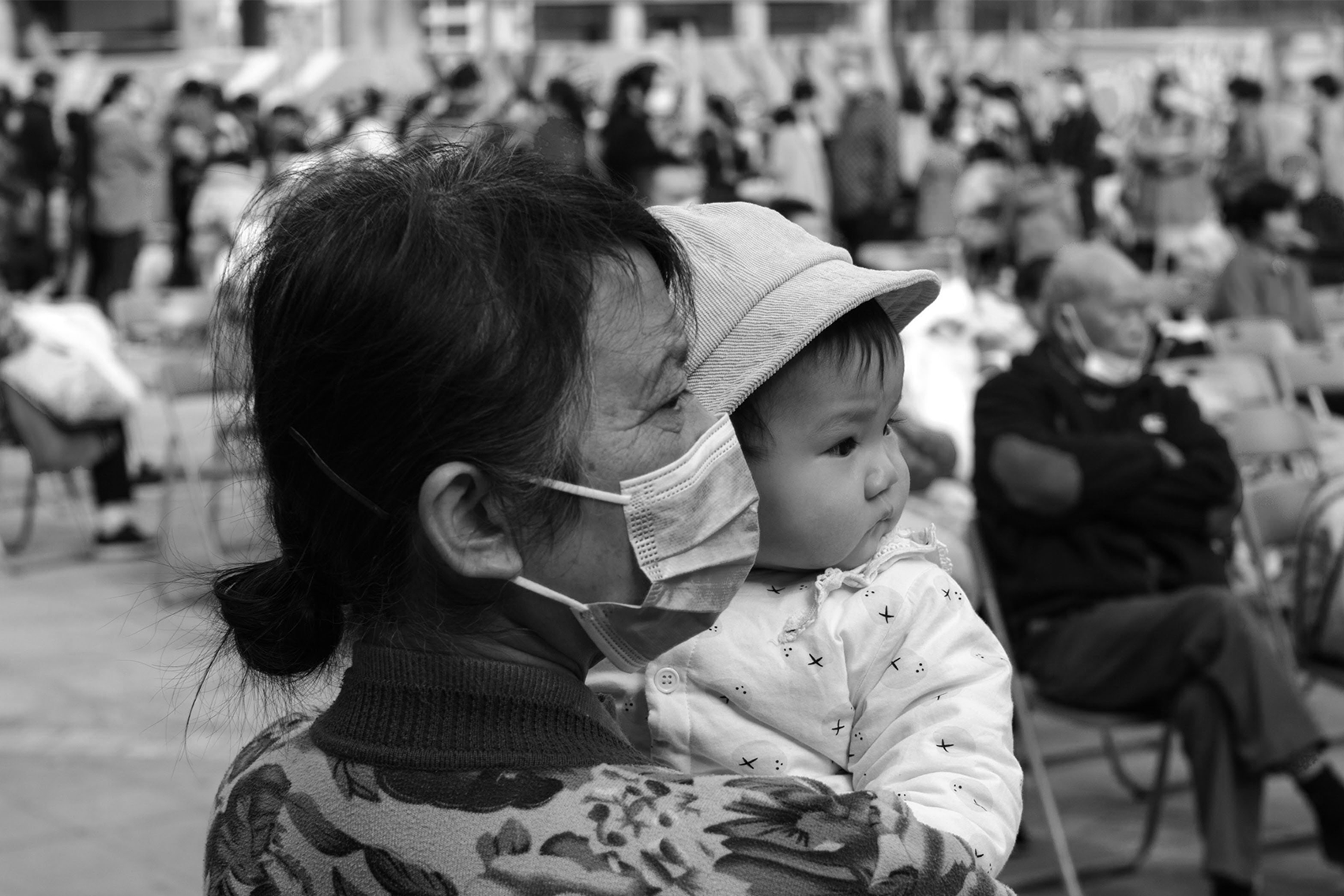
The Challenge
As living alone becomes a trend of life arrangements for Chinese retired senior citizens who greatly value personal time, research also presents that severer physical and psychological issues could arise for them, likely bringing more challenges to the ageing support system in the future. Among this group, impacted by traditional family responsibility, many recently retired women still ‘have to’ engage in almost full-time grandparenting work. Which has been proved that although they can receive emotional rewards from this kind of family connection, high-frequent grandparenting could negate the benefits and accelerate the deterioration brought by ageing, leading to irreversible harms to their state.
The initial aim of this project was to better understand the current life experience of Chinese retired residents in urban areas, to discover a solution to provide them with effective assistance, enabling a more confident life.
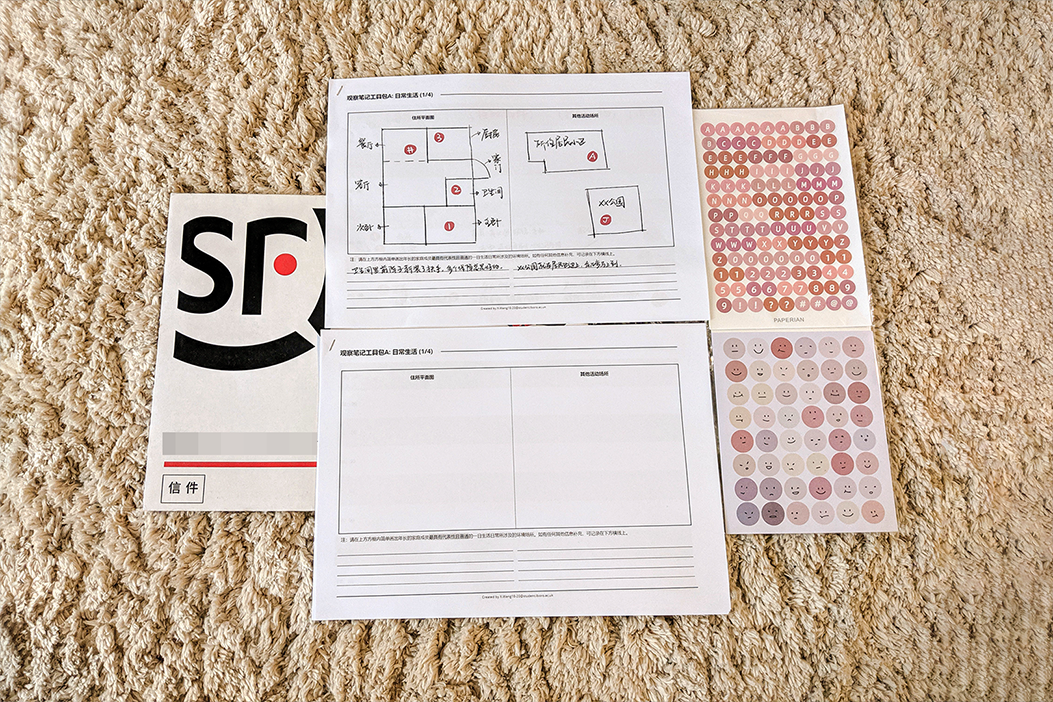
User Research
Taking pandemic restrictions and ethical limitations into considerations, the primary research methods were designed in a way enabling remote and ‘indirect’ data collection with ‘assistant participants’ who were recruited together with the target subjects. Methods included:
• 11 ‘Observation Diary’ studies, to understand the thoughts and feelings behind the life routines, trying to find out the patterns of how they interact with people, objects and environments.
• 3 focus groups for ‘Storytelling’ study, to understand ‘unusual’ life incidents out of routines and the dynamics of life changes from the time when just retired to an older future.
Supplemental secondary research was also carried out to understand certain subject type regarding different family roles, who was not covered in primary research because of sampling issues.
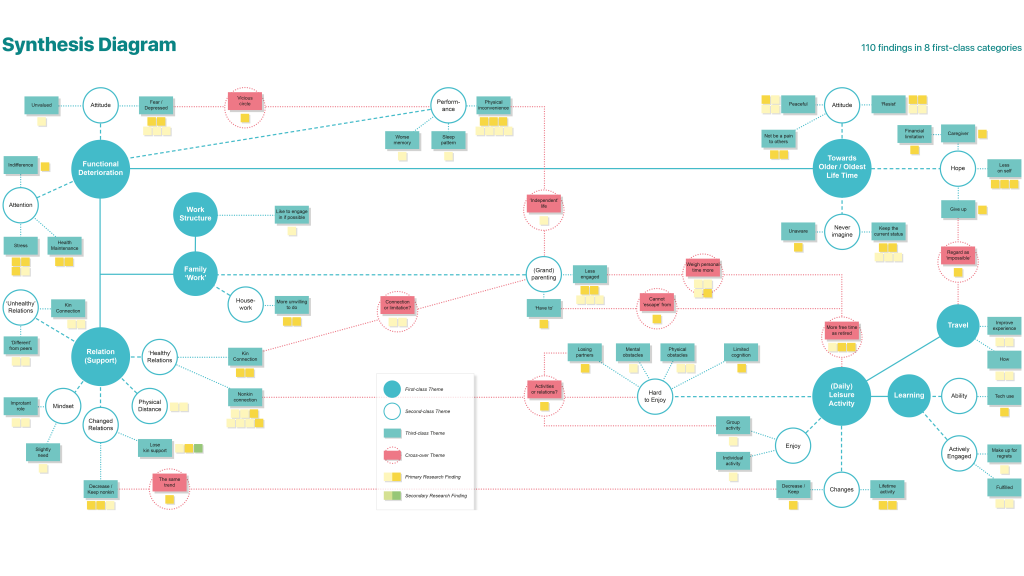
Key Insights and Opportunities
The collected data were analysed using participant boards, transcriptions and a synthesis diagram to extract out insights based on both affinity and cross-over associations. The final 6 key insights in summary:
• Fear is the biggest obstacle
• The ‘abandoned’ oldest life stage
• Retirement doesn’t mean that time is in control
• Saving money might not save life experience
• Busy for busy to avoid falling in ‘marsh’
• ‘Ineffective’ communication
These key insights were then turned into 3 merged key opportunity directions and the initial UX vision.
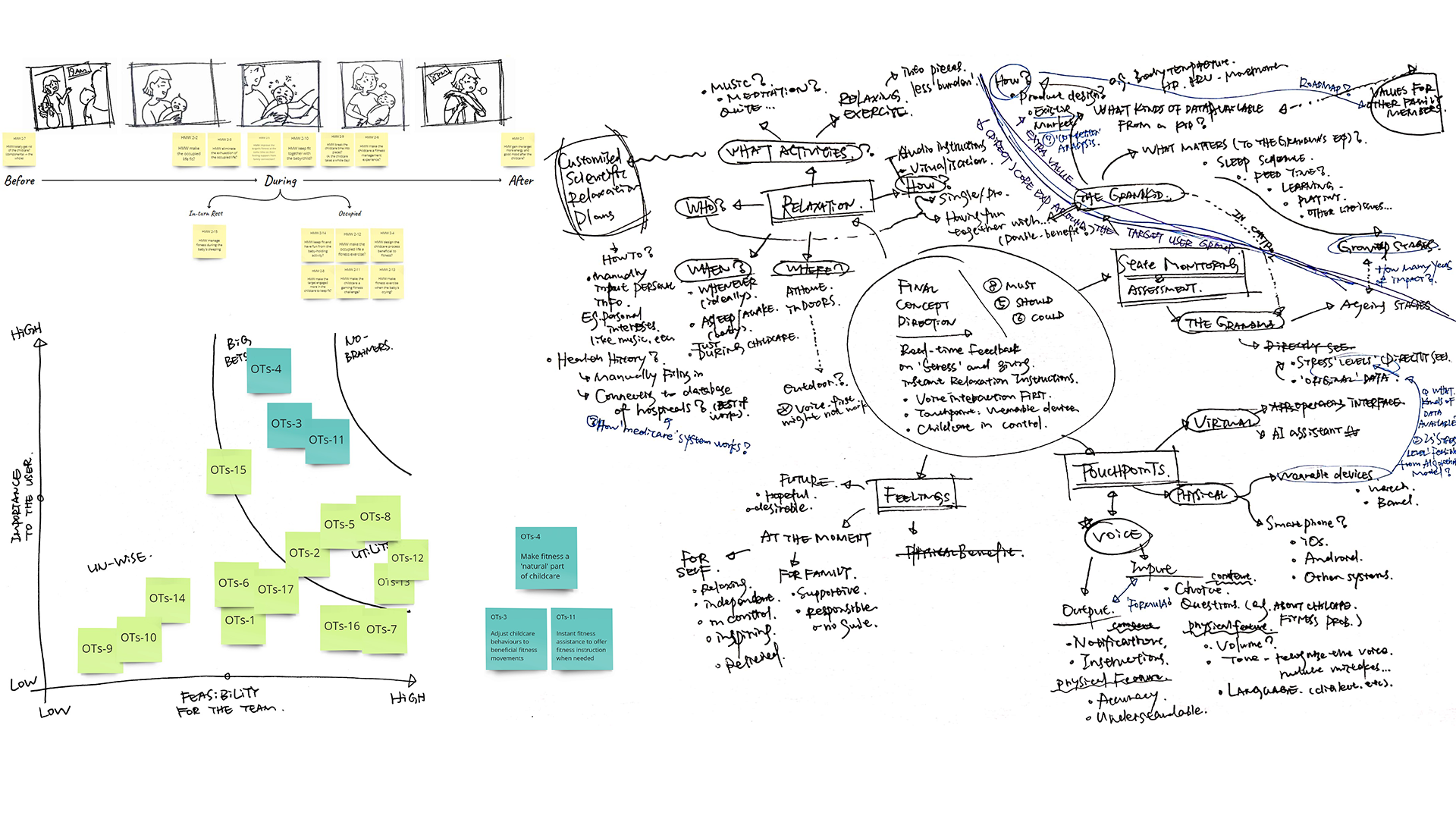
Concept Generation and Development
The UX vision was iterated mainly by persona generation to enable an actionable version to guide concept generation and development.
The initial concept statement and experience principles were determined through a series of design activities, which included:
• Repeatedly Ideating and evaluating to identify high-potential opportunities as candidate experience scenarios. The applied methods and tools included: ‘How Might We’, Opposite Thinking, Prioritisation Grid, Trend vs Trend Matrix.
• Experience prototyping with 25 subject participants to identify the best experience scenario. The applied methods and tools included: Storyboard, EmoTrak, Likert Scales, ‘I Like, I Wish, What if’.
• MoSCoW prioritisation and sorting questionnaire to identify high-ranking user requirements based on feedback collection from experience prototyping.
The prioritised features and an experience journey map guided the concept development in several fields, including the application of AI and conversation design, through supplemental secondary research, prototyping and testing with a small group of the target users.
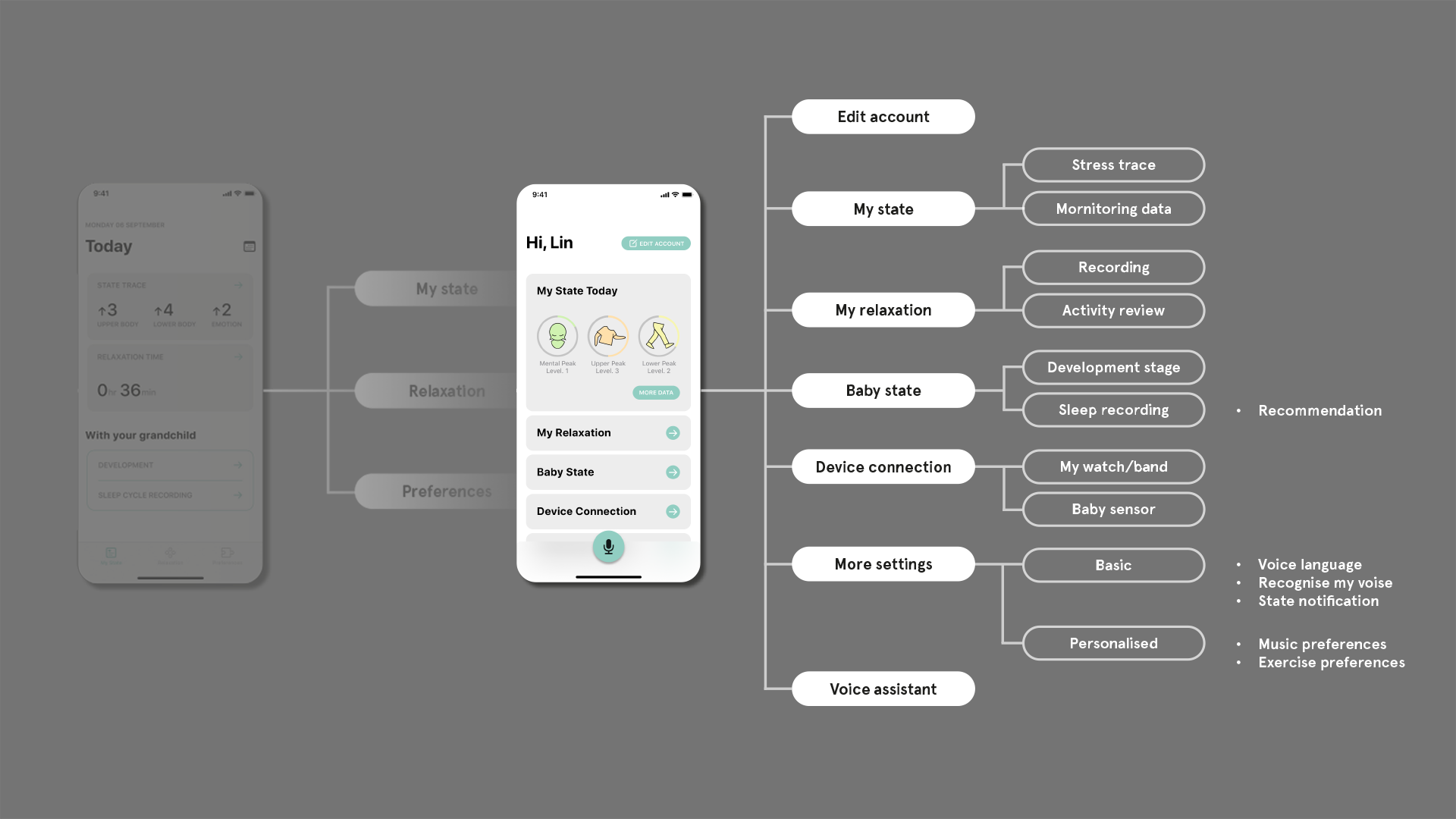
Prototype Iteration
Started together with concept development, the prototype was created and iterated. The process covered:
• Conversation design iteration, to deliver a comfortable communicating experience. The methods and tools included: voice audition, voice prototyping.
• Middle-fidelity user interface design iteration, to determine the information structure, layout, and usability. The methods and tools included: experience prototyping, After-Scenario Questionnaire (ASQ), System Usability Scale (SUS), heuristics and accessibility evaluation.
• The high-fidelity user interface design was mainly about visual design and accessibility iterating.
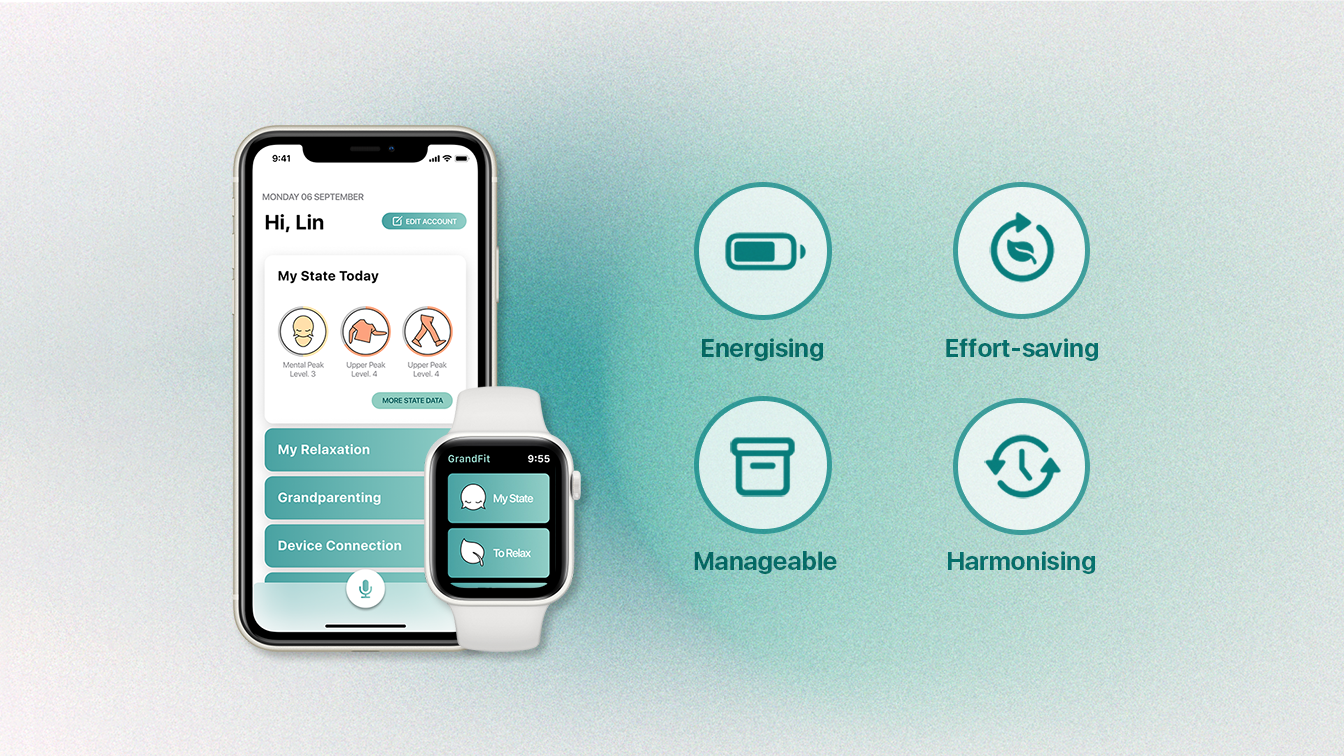
Final Design: Experience Principles
Energising: GrandFit offers scientific relaxation instructions and state reassessment to assure grandmas that they can get rid of consistent damage from exhausting childcare on their health.
Effort-saving: GrandFit provides real-time monitoring and predicts the baby’s sleep schedule for grandmas to have more flexible fitness management whilst well supporting the family.
Manageable: GrandFit applies AI technique and voice interaction to customise a highly efficient and effective experience for grandmas to get health assistance.
Harmonising: GrandFit enables grandmas to keep fit with least disturbing the grandparenting work, even benefits the grandchild development by offering relax-with-baby plans.
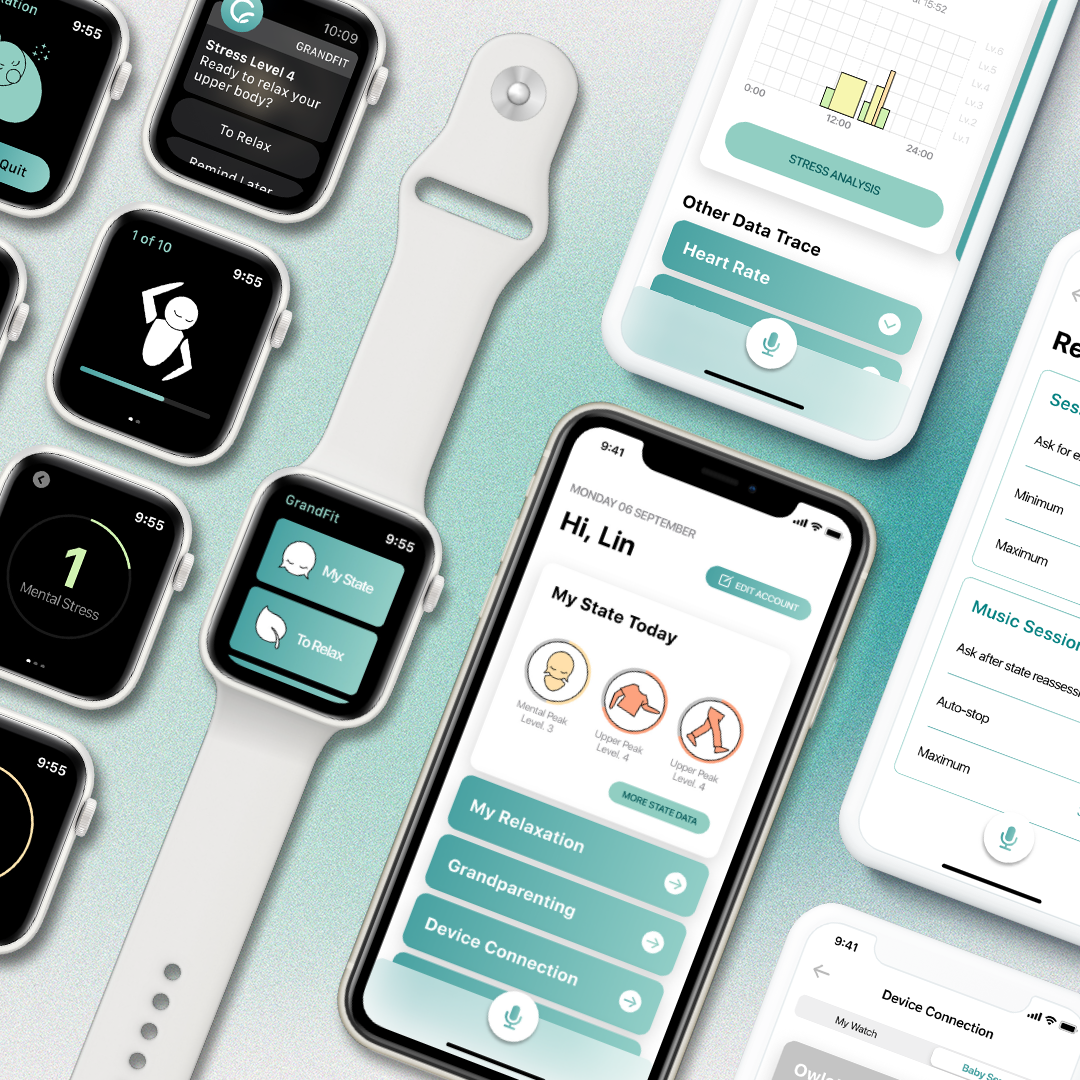
Final Design: Visual and Voice User Interfaces
GrandFit is a smart ‘assistant’ who takes care of the grandmas whilst the grandmas are busy looking after their grandkids. Communicating in voice-first interaction, enables a good understanding of the real-time mental and physical states, offering efficient and effective relaxation plans which are naturally embedded in the grandparenting work, as well as considerate and easily understandable instructions for the grandmas to manage their fitness during full-time childcare before kindergarten age.
Xinyi Wang
An organised UX researcher who enjoys systematic thinking with an interest in psychology.
From a background in industrial design with an engineering bachelor degree, I owned a logic-driven working style and an open mind towards diverse areas of expertise, aiming to be a T-type professional. User experience became the focus that I chose to dive into, which tells the essence of design and uncovers the in-depth motivations ‘hidden’ by human users. Other than having enhanced the command of the design process, benefited from the study experience in the UXD program, I’ve got a nearly qualitative change in mindset concerning the relationship between the designer role and the users. I believe that one of the designer’s responsibilities is eliminating obstacles to mutual understanding between different individuals to enable a solid solution, which is also a general challenge for many other fields though. As an individual wishing for a united human community, I’m ready to devote my design knowledge and skills to improve life to construct a beautiful shared future.
Major project
GrandFit: Keeping Your Golden Retirement Years